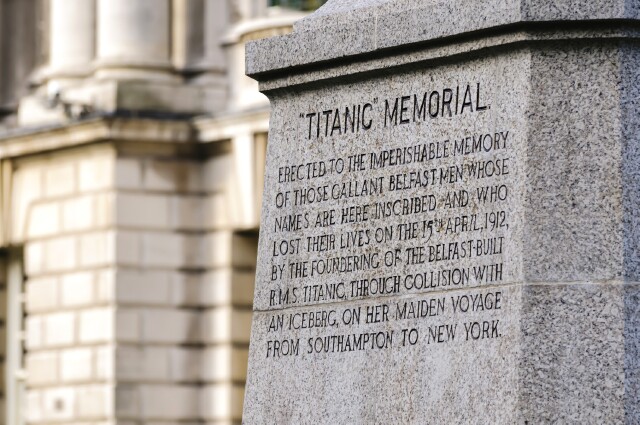HISTORY's Moment in Media: The Rise of Radio Amid the Sinking of the Titanic

When the luxury ocean liner RMS Titanic sank in the early-morning hours of April 15, 1912 -- 110 years ago this month -- it was a historic disaster, a shocking loss of life and, nearly a century later, the inspiration for James Cameron's greatest filmmaking triumph. It was also a key moment in the development of the then-new technology of radio.
Guglielmo Marconi, an Italian-born physicist and inventor, started experimenting with radio waves in the 1890s as a student at the Livorno Technical Institute. He successfully developed the first system to wirelessly transmit telegraph messages -- just dots and dashes, not voice -- and received his first patent in England in 1897. In 1899, he founded the London-based Wireless Telegraph and Signal Company (eventually changed to Marconi's Wireless Telegraph Company). In 1901, he successfully completed -- faintly -- the first transatlantic transmission. In 1909, he shared the Nobel Prize in physics with the German physicist Karl F. Braun, the inventor of the cathode ray tube, which was integral to the development of television.
But there was still relatively little adoption or regulation of the new radio technology. By 1912, when Titanic set sail from Southampton, England, for New York, wireless telegraphs were in use by some ships, mostly as a novelty. Titanic, as the biggest and most luxurious liner, was outfitted with the biggest and best Marconi telegraph machine, and two so-called Marconi Men to operate it. They were kept busy by passengers sending what read a lot like Edwardian group chats: "No sickness. All well. Notify all interested in poker." "Hello Boy. Dining with you tonight in spirit, heart with you always. Best love, Girl."
Ships also used Marconi's wireless telegraphy to share news about weather conditions and potential hazards. But the Titanic operators were so busy with the passenger messages that they missed news about ocean ice. Bandwidth was scarce, interference was a problem and when a nearby ship telegraphed that it was already surrounded by ice, chief telegraphist Jack Phillips -- who would later become famous for bravely tapping out distress signals until he went down with the ship -- was irritated by the interruption rather than appreciative of the warning. "Shut up! I am busy," Phillips replied.
When the iceberg hit, those distress signals started. In a pre-regulation era, there were two emergency messages: the British CQD ("seek you," plus "distress" or "danger") and the German-derived SOS, which was not yet widely used. Phillips and his deputy, Harold Bride, alternated between the two signals. That 700 Titanic passengers survived was thanks to those wireless messages: RMS Carpathiareceived the SOS and arrived two hours after Titanicwent down to rescue those who made it to lifeboats. But mostly there was telegraphic chaos: messages got garbled; airwaves were overwhelmed by questions and irrelevant queries; back on land, amateur users put out some hoax messages, like one that claimed the day after the disaster that "all Titanicpassengers safe; towing to Halifax."
Ironically, the nearest ship, the SS Californian, didn't receive any of the distress calls -- its Marconi Man turned off his machine and went to bed after Phillips told him to shut up.
But despite the tragedy of that night, it cemented radio as a useful new medium. As it steamed toward New York, Carpathiatelegraphed ahead with lists of survivors. From the powerful Marconi station atop Wanamaker's department store in lower Manhattan, operators took down those names and distributed them to newspapers. (David Sarnoff, who would go on to run RCA and be instrumental in the creation of television, was running the Wanamaker's station. For decades, he would falsely claim that he worked nonstop for three days, alone, to take in those survivor lists.)
Radio had proved its value as a news-transmitting tool. And just months later, after Senate hearings looking into the disaster, Congress passed the Radio Act of 1912, the first U.S. regulation of the airwaves. It required broadcasters to be licensed to cut down on interference and hoax messages; that wireless communications at sea remain in operation 24 hours a day, and that SOS be set as the official distress code.
SOS stayed in use until 1999, when a satellite-based system replaced Morse code.
Click the social buttons to share this content with your friends and colleagues.
The opinions and points of view expressed in this content are exclusively the views of the author and/or subject(s) and do not necessarily represent the views of MediaVillage.com/MyersBizNet, Inc. management or associated writers.

